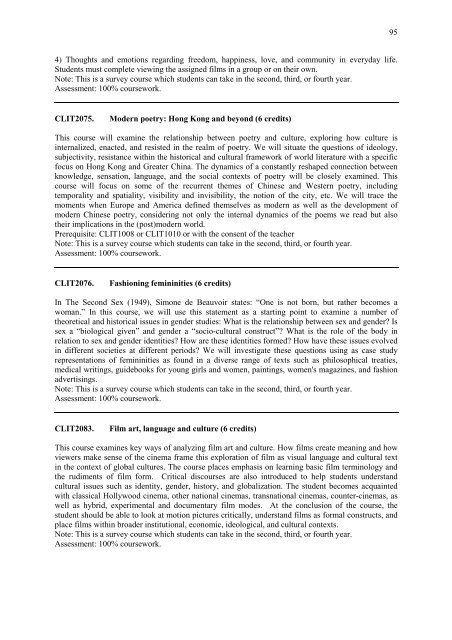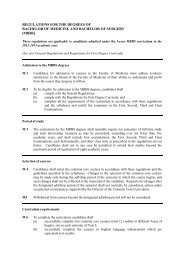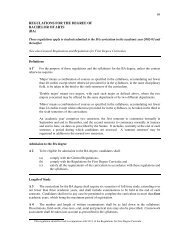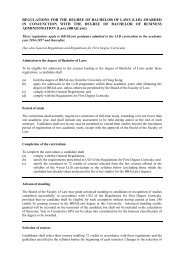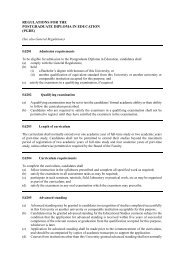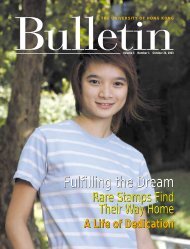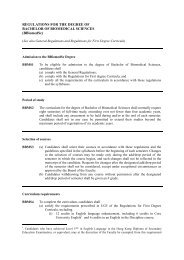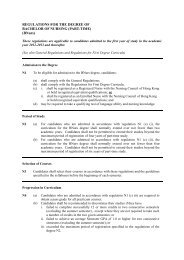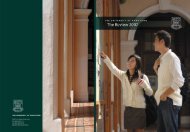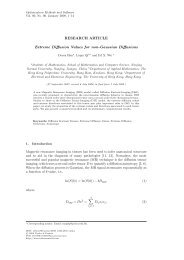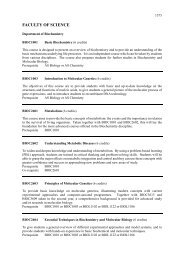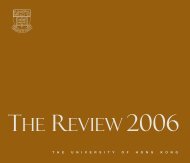(BA) (4-year-programme) - The University of Hong Kong
(BA) (4-year-programme) - The University of Hong Kong
(BA) (4-year-programme) - The University of Hong Kong
You also want an ePaper? Increase the reach of your titles
YUMPU automatically turns print PDFs into web optimized ePapers that Google loves.
954) Thoughts and emotions regarding freedom, happiness, love, and community in everyday life.Students must complete viewing the assigned films in a group or on their own.Note: This is a survey course which students can take in the second, third, or fourth <strong>year</strong>.Assessment: 100% coursework.CLIT2075.Modern poetry: <strong>Hong</strong> <strong>Kong</strong> and beyond (6 credits)This course will examine the relationship between poetry and culture, exploring how culture isinternalized, enacted, and resisted in the realm <strong>of</strong> poetry. We will situate the questions <strong>of</strong> ideology,subjectivity, resistance within the historical and cultural framework <strong>of</strong> world literature with a specificfocus on <strong>Hong</strong> <strong>Kong</strong> and Greater China. <strong>The</strong> dynamics <strong>of</strong> a constantly reshaped connection betweenknowledge, sensation, language, and the social contexts <strong>of</strong> poetry will be closely examined. Thiscourse will focus on some <strong>of</strong> the recurrent themes <strong>of</strong> Chinese and Western poetry, includingtemporality and spatiality, visibility and invisibility, the notion <strong>of</strong> the city, etc. We will trace themoments when Europe and America defined themselves as modern as well as the development <strong>of</strong>modern Chinese poetry, considering not only the internal dynamics <strong>of</strong> the poems we read but alsotheir implications in the (post)modern world.Prerequisite: CLIT1008 or CLIT1010 or with the consent <strong>of</strong> the teacherNote: This is a survey course which students can take in the second, third, or fourth <strong>year</strong>.Assessment: 100% coursework.CLIT2076.Fashioning femininities (6 credits)In <strong>The</strong> Second Sex (1949), Simone de Beauvoir states: “One is not born, but rather becomes awoman.” In this course, we will use this statement as a starting point to examine a number <strong>of</strong>theoretical and historical issues in gender studies: What is the relationship between sex and gender? Issex a “biological given” and gender a “socio-cultural construct”? What is the role <strong>of</strong> the body inrelation to sex and gender identities? How are these identities formed? How have these issues evolvedin different societies at different periods? We will investigate these questions using as case studyrepresentations <strong>of</strong> femininities as found in a diverse range <strong>of</strong> texts such as philosophical treaties,medical writings, guidebooks for young girls and women, paintings, women's magazines, and fashionadvertisings.Note: This is a survey course which students can take in the second, third, or fourth <strong>year</strong>.Assessment: 100% coursework.CLIT2083.Film art, language and culture (6 credits)This course examines key ways <strong>of</strong> analyzing film art and culture. How films create meaning and howviewers make sense <strong>of</strong> the cinema frame this exploration <strong>of</strong> film as visual language and cultural textin the context <strong>of</strong> global cultures. <strong>The</strong> course places emphasis on learning basic film terminology andthe rudiments <strong>of</strong> film form. Critical discourses are also introduced to help students understandcultural issues such as identity, gender, history, and globalization. <strong>The</strong> student becomes acquaintedwith classical Hollywood cinema, other national cinemas, transnational cinemas, counter-cinemas, aswell as hybrid, experimental and documentary film modes. At the conclusion <strong>of</strong> the course, thestudent should be able to look at motion pictures critically, understand films as formal constructs, andplace films within broader institutional, economic, ideological, and cultural contexts.Note: This is a survey course which students can take in the second, third, or fourth <strong>year</strong>.Assessment: 100% coursework.


